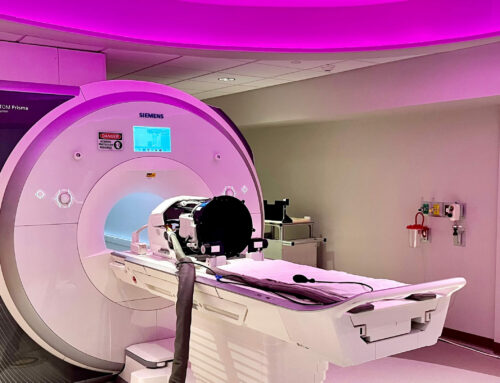By Bob Tilling, VP Global Sales, Kallik
Originally planned to come into force this year, the implementation date of the new EU Medical Device Regulation (EU MDR) has now been extended to 2021. Under the new regulation, identification and traceability measures will be compulsory for all medical device labeling in the EU market. The demands of the new regulation highlight some flaws within manual labeling processes and, for some manufacturers, could require a complete overhaul of global labeling management operations. Streamlining labeling processes now will ensure businesses are compliant with the new regulations – and are prepared for future regulatory changes as they happen. Because this time around, products really do have to “do what they say on the tin.”
For the last few years, medical device manufacturers have been – or should have been – preoccupied with preparations for the EU’s major revamp of the official safety controls governing medical devices sold and used across its jurisdiction. All new medical devices coming onto the market must comply with the new EU MDR requirements. For some manufacturers of medical devices, the delay to 2021 may come as good news in a time of widespread business disruption. But manufacturers should not use the extension of the regulation as an excuse to ignore making operational changes until just before the deadlines – rather, they should see it as an opportunity to properly prepare operations for increased compliance.
Starting from scratch: The pain of playing catch up
Up to now, compared to the adjacent pharmaceutical and biotech sectors, the medical device industry has had the luxury of more relaxed controls over device identification and traceability, and product lifecycle monitoring and reporting. This, added to the relative size and scale of many of the firms involved, has meant processes such as global labeling management have previously not been viewed as a board-level priority.
Physical labels are typically created as templates and printed manually on the factory floor using data from ERP systems, while other customer-facing materials such as instructions for use (IFU) leaflets tend to come under the remit of separate teams, or even external design agencies in many cases. This disjointed approach will not be sufficient under the new EU regulations, which assume more systematic process coordination and content uniformity.
For many manufacturers of medical devices, the upcoming regulation will therefore not only require a change in labeling to make them compliant, but the labeling process will need a complete overhaul to ensure consistent labeling is carried out efficiently. Here are four key challenges that manufacturers need to overcome to be EU MDR compliant, and how a capable automated labeling solution will be central to this process.
New regulation demands identification and traceability…
Incorrect labeling means products do not have the required transparency as they move from factories, through distribution, to the hospitals, doctors’ surgeries and pharmacies who supply them, and the recipient patients. Incidents such as the PIP breast implant scandal of 2009/2010 could still wreak havoc. This is what MDR is designed to avoid.
Under MDR, everything from bandages and crutches to digital patient monitoring devices, contraceptive implants, hearing aids and pacemakers will need to carry a unique device identifier (UDI) on all of its labeling, enabling rapid lookup in the event of an issue. Faulty batches of products can be pinpointed and tracked down in the market for targeted remedial action – but this depends on accurate, consistent and reliable labeling.
On top of traceability, the stringent new measures under MDR demand that information is logged in a huge central EU database, EUDAMED – a prerequisite for marketing medical devices in European markets. Products must be correctly labeled with specified safety information and symbols and meet requirements around electronic IFUs. So, devising a more defined strategy for enterprise labeling and artwork is critical.
…But manual processes will not be robust enough
Any change to labeling can threaten the quality and reliability of what is issued, as even simple adjustments can throw out the layout, leave a barcode partially missing, or obscure critical wording. So, it is imperative that manufacturers are not still relying on ad-hoc manual processes for ensuring that all ensuing output meets the new regulations consistently and definitively.
A single source of labeling ‘truth’ – across every channel, market and geography
Manufacturers cannot hope to keep on top of product identification and traceability, or manage this with rigor and efficiency, if they do not have clear visibility, control and systematic coordination across everything included on or with their products – through every channel, in every market.
In the final countdown to MDR compliance, many manufacturers will realize that their internal systems are not up to the task of handling the new EU requirements across global operations. Although the responsible teams at these companies know what they have to do, getting the right labels out onto products and packaging when manufacturing and distribution operations span locations in the Far East and U.S., as well as Europe itself, is a big challenge.
The only way to ensure consistency and reliability across all channels and markets is to digitize the labeling process and have a single source of labeling ‘truth’ that all market-facing product information and materials flow from. In other words, one definitive place to update and check everything – which any authorized team can access, anywhere in the world, supported by appropriate controls governing who can do what to and with the content assets.
Label management consolidation doesn’t happen overnight
The biggest impact MDR will arguably have on medical device manufacturers relates to the scale of work involved – but many companies will underestimate this and leave projects too late. Dispersed teams and disjointed processes, as well as inevitable duplication between content sources such as translation databases (for instance where these have existed separately for label and IFU creation), make for highly complex scenarios that take time to unravel. And this all needs to be done before improvements can be implemented to streamline and automate processes, such as change management.
If organizations leave MDR preparations until the eleventh hour they will be forced by time pressures to do the minimum required for compliance, even if that is a costly workaround that does not deliver the quality control, compliance confidence or process efficiencies the manufacturer needs – fail to prepare, and prepare to fail!
Caution: More regulatory changes up ahead!
Regulatory disruptions are not a one-off event. MDR will not be the only major global change to come the industry’s way, so companies that do not take the time to properly implement change are likely to have to do it all again the next time new requirements are introduced. For example, product serialization on device labeling is likely to become mandatory in the coming years.
For the time being, manufacturers’ marketing products in Europe only have to provide UDI information to the EUDAMED database but starting from May 2021 unique product identifier codes and detailed product serialization information will have to appear on all product labeling. The 2021 deadline applies for the most safety-sensitive – Class III – devices, followed by Class II in 2023, then Class I items in May 2025. The UDI must appear in plain text on all packaging parts of a product, be machine-readable, and include a wealth of very specific information under two different categories – a Device Identifier (DI) and a Production Identifier (PI). There is a lot to get right in the coming months and years.
Seize the moment – new regulation is an opportunity to address inefficiencies and gain brand confidence
This is the first time in the medical device sector that changes to labels and IFUs have come at the same time, driving home to manufacturers just how inadequate some of their existing disconnected processes are. If they haven’t already, companies need to review the extent of their inefficiencies and start working towards a common approach to managing market-facing information based on common content, shared data and more connected ways of working.
By implementing a consistent and compliant labeling solution, medical device manufacturers not just optimize their global label management processes, they increase accountability and transparency, and reduce compliance risks ahead of the MDR deadline and any future regulation changes. Remember, those manufacturers that are seen by the industry to comply readily, even going the extra mile to give consumers the reassurances they need, will gain in market confidence around their brand. The desire for greater transparency and consumer self-service is not going to go away, so the more manufacturers can do proactively to satisfy this need, the better received their products will be.












